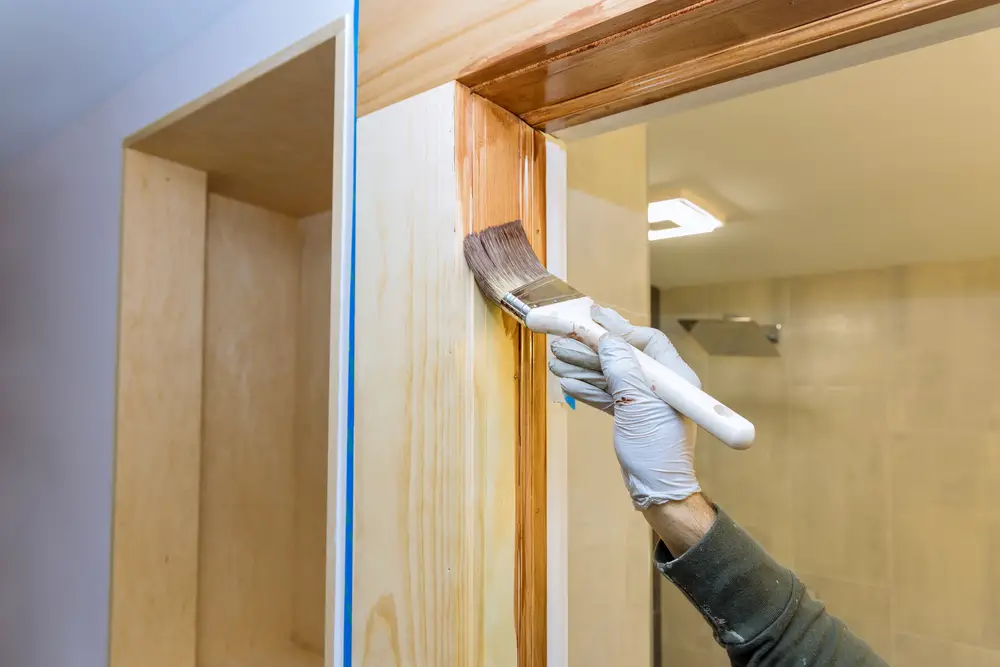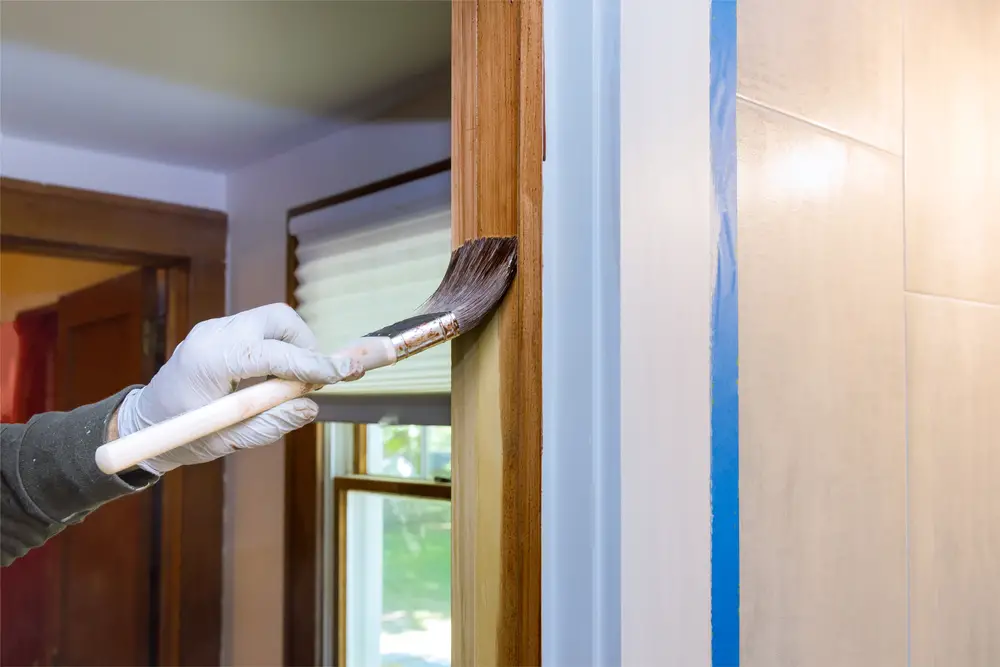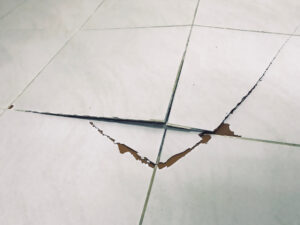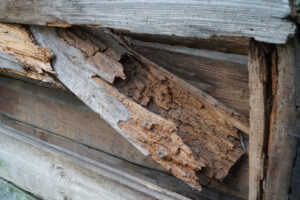When it comes to painting a room, one question that often arises is whether to paint the walls or woodwork first. The order in which you tackle these surfaces can impact the overall outcome of your painting project. So, what’s the best approach? Let’s delve into the details and find out!

Before we get into the specific order, it’s important to note that the answer may vary depending on the type of paint you’re using. If you’re using oil-based paint for the woodwork, the recommended order is to start with the ceiling, then move on to the walls, and finally, tackle the woodwork. On the other hand, if you’re using water-based paint for the woodwork, the order changes slightly. In this case, it’s best to first paint the ceiling, then the woodwork, tape it up, and finally paint the walls.
Now, if you’re utilising spray painting techniques, the order becomes even more specific. It’s advisable to spray the walls first, followed by the ceiling, and finish off with the woodwork. This sequence allows for optimal coverage and a seamless finish.
But what about wallpapering? Well, the process is a bit different. For wallpapering, it’s recommended to line the walls first, then paint the ceiling and woodwork, and finally hang the wallpaper. This ensures a smooth and professional-looking result.
Ultimately, the order in which you paint the walls and woodwork depends on the materials and application methods you’re using. It’s crucial to consider the type of paint, desired finish, and personal preference when making this decision. So, take a moment to assess your specific project and choose the order that works best for you.
Preparing the Surfaces and Choosing the Colors
Before we dive into the exciting world of painting, it’s crucial to give some attention to the surfaces we’ll be working on. Whether it’s walls or woodwork, ensuring they are in good condition is vital for a smooth and flawless finish. Take a close look and inspect for any flaws, such as cracks or holes. If you spot any, don’t worry – a bit of sanding and filling will do the trick.
Now that our surfaces are primed and ready, let’s talk color selection. The choices are endless, and it’s where you can let your creativity shine! You could go for a uniform look with one color for all the walls. Alternatively, consider adding a feature wall for a pop of excitement. Complementary colors can create a harmonious vibe, while contrasting colors add drama and flair. And if you want to make a statement, accent colors will do the trick.

Creating the Perfect Color Palette
When it comes to choosing colors, it’s important to envision how you want the room to feel. Think about your furniture, artwork, and the overall vibe of your home. Do you want a calming and serene space or a vibrant and energetic one? Keep these factors in mind when selecting your paint colors. To make sure you’re making the right choices, it’s a great idea to test paint colors with tester pots and create a moodboard. This will give you a visual representation of how the colors will interact and help you make informed decisions.
With surfaces carefully prepped and colors chosen, we’re now ready to embark on our painting journey. In the next section, we’ll explore the different painting orders for various types of paint, so stay tuned!
Different Painting Orders for Various Paint Types
When it comes to painting, the order in which you tackle the walls and woodwork can make a difference in achieving a professional finish. The specific order depends on the type of paint you are using for your project. Let’s explore the different painting orders for various paint types and methods.
Oil-Based Paint
If you are using oil-based paint, it is generally recommended to start by painting the ceiling, followed by the walls, and finally the woodwork. This order allows you to work from top to bottom, minimizing the chances of paint splashes on lower surfaces. It also makes it easier to cut the walls into the ceiling and achieve sharp lines on the woodwork.
Water-Based Paint
For water-based paint, the order changes slightly. Begin by painting the ceiling, then move on to the woodwork. Tape up the freshly painted woodwork to protect it before moving on to paint the walls. This order is particularly useful for achieving crisp lines on the woodwork when working with water-based paints, which can be trickier to work with.
Spray Painting Techniques
If you prefer to use spray painting techniques, the recommended order is to spray the walls first, followed by the ceiling, and finishing with the woodwork. This order ensures a smooth and even application of paint, especially when using spray equipment. Be sure to prepare the surfaces properly before applying the paint to achieve the best results.

Conclusion
After considering the various factors, it is clear that the order in which you paint the walls and woodwork depends on several variables including the type of paint, the desired finish, and personal preference.
For projects using oil-based paint, I recommend starting with the ceiling, followed by the walls, and finally the woodwork. This approach allows for clean lines and easier cutting of the walls into the ceiling. On the other hand, if you are using water-based paint, it is best to begin with the ceiling, then the woodwork, tape it up, and finish with the walls. This order helps achieve sharp lines on the woodwork and reduces the chances of smudging the walls.
If you’re utilizing spray painting techniques, it is advised to spray the walls first, then the ceiling, and ultimately the woodwork. This sequence ensures a smooth and efficient process. For those considering wallpapering, it is crucial to line the walls first, followed by painting the ceiling and woodwork, and finally hanging the wallpaper.
Remember, regardless of the order, proper surface preparation and careful color selection are key to a successful painting project. Take your time, consider all the variables, and choose the painting order that aligns best with your specific needs.
FAQ
Do I paint the walls or woodwork first?
The order in which you paint the walls and woodwork depends on the type of paint and method you are using. If you are using oil-based paint, it is recommended to first paint the ceiling, then the walls, and finally the woodwork. If you are using water-based paint, the order changes slightly, with the ceiling, woodwork, and walls. Spray painting techniques follow a different order, starting with the walls, then the ceiling, and finishing with the woodwork. Wallpapering requires lining the walls first, followed by painting the ceiling, woodwork, and then hanging the wallpaper.
How do I prepare the surfaces before painting?
Before starting any painting project, it is important to ensure that the surfaces, such as walls and woodwork, are in good condition. If there are flaws or signs of wear and tear, you may need to do some sanding and filling of cracks and holes. This will help create a smooth and even surface for painting.
How do I choose the right colors for painting?
When it comes to color selection, you have various options. You can choose to use one color for all the walls or include a feature wall. Complementary colors, contrasting colors, and accent colors can also be considered. It is recommended to imagine how you want the room to feel and choose colors that will interact well with your furniture, art, and the rest of the house. Testing paint colors with tester pots and creating a moodboard can help in making the right color choices.
Why is the painting order different for different paint types?
The order in which you paint the walls and woodwork can vary depending on the type of paint you are using. Oil-based paint and water-based paint have different drying times and application properties. The recommended order takes these factors into account to help achieve the best results.
- Drill Battery Maintenance: Essential Tips for Cordless Drill Battery Care - February 5, 2024
- Troubleshooting Drill Issues - February 5, 2024
- Quick Drilling Techniques - February 2, 2024









